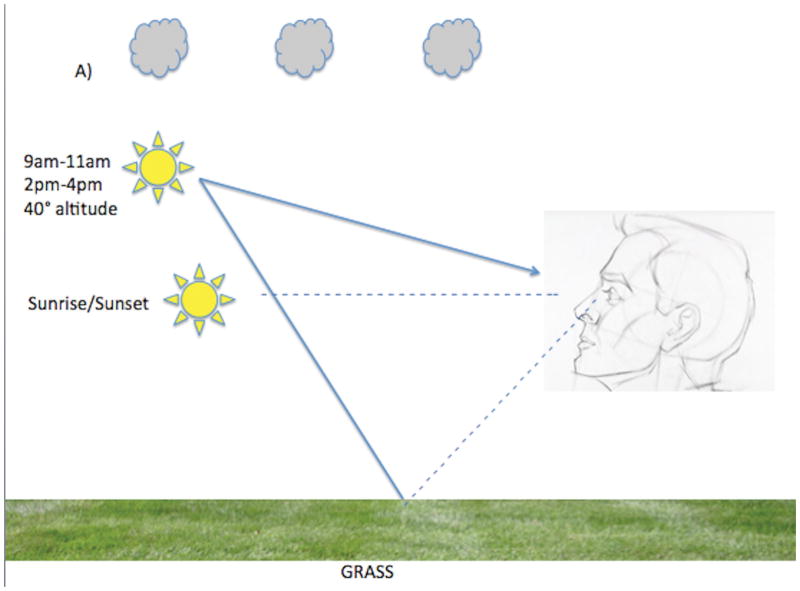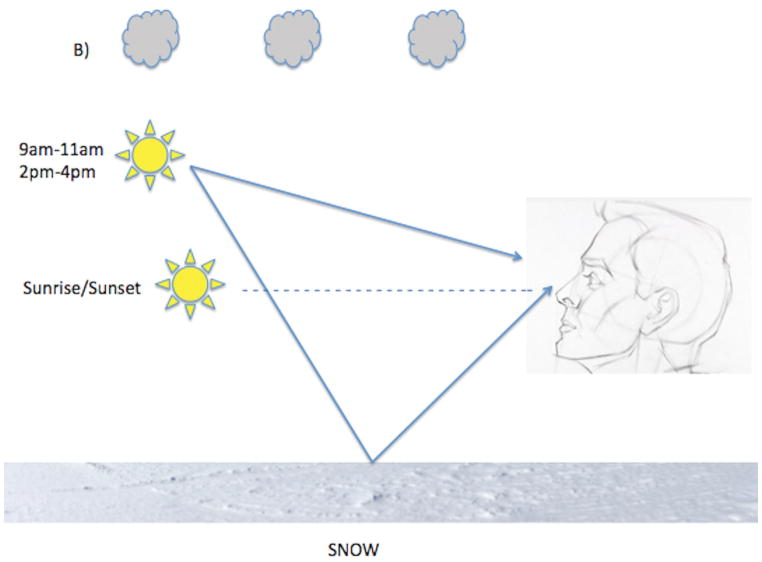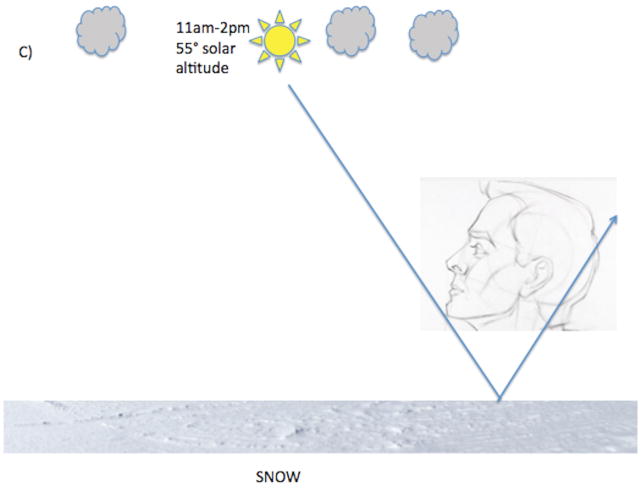Figure.
(A) At 40° latitude North, during sunrise and sunset, direct ocular exposure is low because UV radiation is low (dotted line) and there is no indirect reflected solar exposure. Between 9–11am and between 2–4 pm when solar altitude is moderate, direct ocular exposure is higher and is variably augmented by indirect solar reflection. Indirect solar reflection (dotted line directed from ground to the eye) is low in a grassy environment (A) because grass does not reflect solar rays well but is particularly high (solid arrow from ground directed to the eye) in an environment with snow cover, as snow is an excellent reflector of solar rays (B). (C). At 11am–2pm solar altitude is high and so is UV radiation but both direct and indirect ocular solar exposure is low unless one is purposefully gazing at the sun.



